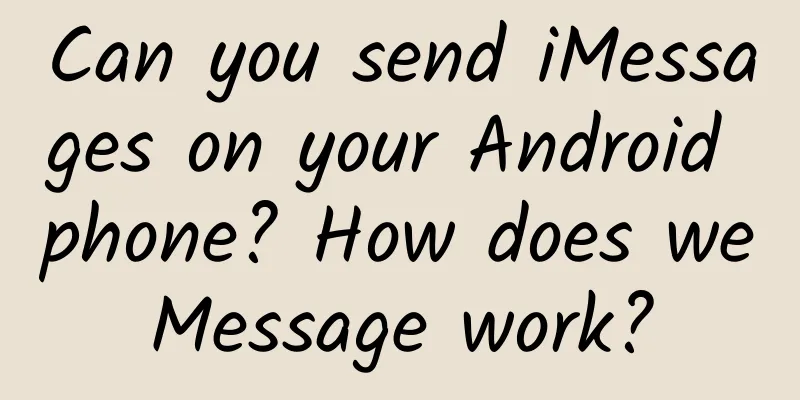Does light have its own festival? Today, let’s get to know the light around us again.

|
From lighting to energy, from medicine to communications, light, in its various forms, has brought a lot of convenience to people's lives. But did you know that "light" also has its own festival? In 1960, physicist Theodore Maiman created the first ruby laser, ushering in a new era for the application of light. Since then, laser technology has been rapidly and widely used, becoming another great invention after nuclear energy, computers, and semiconductors. To commemorate this major scientific advancement, in 2018 UNESCO designated May 16th of each year as "International Day of Light" to emphasize the important role of light in science, culture, art and education, as well as sustainable development, medicine, communications, energy and other fields. (Copyrighted image from the gallery, no permission to reprint) “The fastest knife”, “the most accurate ruler”…Why does laser have such an important position? Laser is the light emitted by particles in certain substances when they are stimulated. It is different from ordinary light in that the light waves it radiates have the same phase, frequency and vibration direction. The English name of laser is "Laser", which is the abbreviation of the first letters of each word in English "Light Amplification by Stimulated Emission of Radiation". If explained in Chinese, it means "light amplification by stimulated emission of radiation", which actually reflects the working principle of laser. Since the invention of the laser in 1960, it has been widely used in daily life such as lighting, cutting, medical treatment, and military due to its four major characteristics: extremely high brightness, extremely high energy, extremely pure color, and good directionality. It has been hailed as the "brightest light", "the fastest knife" and "the most accurate ruler", and has become one of the landmark technological advances of the 20th century. (Copyrighted image from the gallery, no permission to reprint) The Chinese name for "laser" comes from Qian Xuesen So who gave the laser the English name "Laser"? His name was Gordon Gould. Gould graduated from the prestigious Yale University at the end of World War II with a master's degree in optics and spectroscopy, and then participated in the Manhattan Project to build the atomic bomb. In 1949, Gould entered Columbia University to pursue a doctorate. His mentor, Kusch, was very capable. He had shared the 1955 Nobel Prize in Physics with Lamb for measuring the anomalous magnetic moment of electrons. The Chinese term "laser" is neither a transliteration nor a foreign word. In the first few years after my country made the first laser, there was no such word. At that time, people called "Laser" "quantum amplifier", "Laser", "photonic stimulated emission", etc., but everyone found them very confusing. In October 1964, the editorial department of the magazine "Light Stimulated Emission Information" (formerly "Special Issue on Photon Amplification") sponsored by the Changchun Institute of Optics and Fine Mechanics of the Chinese Academy of Sciences wrote to the famous Chinese scientist Qian Xuesen, asking him to come up with a Chinese name for the new light source, Laser. Professor Qian Xuesen quickly replied and suggested: "The term "light stimulated emission" seems too long and difficult to read. Can it be changed to laser?" In December of the same year, the third academic conference on photon quantum amplifiers was held in Shanghai. The conference was chaired by the famous scientist Yan Jici. The naming of lasers was discussed at the conference, and Qian Xuesen's suggestion was officially adopted to translate the English abbreviation Laser, which stands for "light amplification by stimulated emission of radiation", into "laser". Subsequently, the magazine "Light Stimulated Emission Information" was also renamed "Laser Information". Since then, the term "laser" has been used. (Photo source: Xinhuanet) Can you see lasers with your naked eye? In movies, we have seen such scenes that red laser beams can be seen by wearing red glasses or through red wine. Is this true? The answer is yes. To see a red laser beam, three conditions must be met: first, the laser must be a red laser; second, the background cannot be too dark, it must be red; third, there must be a certain amount of dust in the air. The color of light depends on its wavelength, and the color of laser is determined by the wavelength produced by the excited active substance. Therefore, the wavelength of laser is a range. The photoreceptor cells of the human eye can see lasers with wavelengths between 400 and 800 nanometers, and other lasers greater than 800 nanometers or less than 400 nanometers cannot be seen by the human eye. Laser application: entering ordinary people's homes Laser technology involves many disciplines such as optics, electricity, materials and detection. Although it was born from high-tech scientific research, it has long lost its mysterious color and quietly "broke into" our lives. 1. Medical field Lasers are used more and more widely in the beauty industry, such as removing freckles, age spots, tattoos, eyeliner and eyebrow removal, and scar treatment. Laser treatment of vascular skin diseases is highly accurate and safe and will not affect surrounding tissues. 2. Laser Communication Laser communication refers to a communication method in which lasers are transmitted in the atmosphere. First, the information is converted into an electrical signal, which is then modulated by an optical modulator on the laser beam generated by the laser and then transmitted through an optical antenna. Atmospheric laser communication has a large capacity, good confidentiality, and is not subject to electromagnetic interference. 3. Laser speed measurement The laser distance measurement is performed twice on the object to be measured with a specific time interval, and the moving distance of the object to be measured in the time period is obtained, thereby obtaining the moving speed of the object to be measured. Today, laser display technology has broken away from the limitations of screens and will be integrated with ultra-high-definition video, artificial intelligence, virtual reality and other industries to create a wider range of applications in the fields of VR display, cinema display, indoor and outdoor large-screen display, industrial Internet of Things, etc. I believe that with the joint efforts of scientists, more magical laser technologies will continue to emerge. Groundbreaking fiber optic technology Today, even if you are tens of millions of miles apart, you can make a video call in an instant with the help of high-speed fiber optic networks. Through the Internet, audio and video images are at your fingertips. This is an unprecedented era, and fiber optic communication technology has reshaped the face of the world. Scientific American magazine once commented: "Fiber-optic communication is one of the four most significant inventions since World War II. Without fiber-optic communication, there would be no Internet and communication networks today." However, people know very little about Academician Zhao Zisen, who pulled out my country's first optical fiber, and the birth of the first optical fiber. There are several important node events in optical fiber communication: In 1966, Charles Kao, a British-American Chinese born in Shanghai, first proposed that glass fibers could be used for communication. In 1970, the United States spent $30 million to produce three 30-meter-long optical fiber samples, which was the first time in the world that optical fibers with practical value for optical fiber communication were produced. Seven years later, Zhao Zisen, a young teacher in Wuhan, also pulled out the first practical optical fiber with China's independent intellectual property rights. On December 16, 2016, Academician Zhao Zisen, the "Father of Chinese Fiber Optics," recalled the process of exploring fiber-optic communications. Photo by Xinhua News Agency reporter Cheng Min Since 1973, Zhao Zisen has suggested conducting research on fiber-optic communication technology, put forward the correct technical route, and participated in the drafting of China's "Sixth Five-Year Plan", "Seventh Five-Year Plan", "Eighth Five-Year Plan" and "Ninth Five-Year Plan" fiber-optic communication research plans. In the late 1970s, Zhao Zisen organized the development and production of China's first batch of practical optical fiber cables and equipment. As the technical director and overall designer, he completed six key national and Ministry of Posts and Telecommunications optical cable communication projects, including China's first practical 8Mb/s, 34Mb/s and 140Mb/s optical cable communication projects. Today, China has become the world's largest production base for optical fiber and cable, and has taken the lead in some optical communication fields. The Wuhan East Lake High-tech Zone, where Academician Zhao Zisen is located, has also become the "China Optics Valley", which is as famous as the Silicon Valley in the United States. (Copyrighted image from the gallery, no permission to reprint) Today, glass fiber-based communication systems have been established around the world, with billions of kilometers of glass fiber cables laid underground and on the seafloor. As a microcosm of the millions of people working in the optical industry in my country, we believe that every optician is creating his or her own light-chasing story, and we must not forget that scientists like Academician Zhao have devoted their lives to the field of communications, allowing China's higher-level optical fibers to continue to lead the world. Starting today, let’s get to know the light around you and me again! Comprehensive sources: China Science Magazine, Xinhuanet, Beijing Science and Technology News, etc. |
<<: What is Carbon? | A review of large-scale events that have achieved carbon neutrality: events
Recommend
Do you like this iOS 14 concept design?
Although it is less than half a year away from th...
Ditch the milk and drink "plant milk"? Don't do it yet!
|||| Compiled by New Media Editor Fang Yongzhen T...
"Chen Xiang's 6:30 Movie" 4 movies (2017-2020) HD Chinese subtitles
Li Dacong, the CEO of a technology startup compan...
The Spring Festival travel rush has begun. Which of these ads that flood the screen makes you miss home more?
You must have seen many New Year advertisements l...
WeChat has two versions updated! Ten new features have been quietly launched, and it is recommended to upgrade
Just two days ago, both the Android and iOS versi...
This is how products with over 100 million users retain users
The content of this article is a summary after ac...
Behind the rumors of Google entering China: the market structure has been determined or it may not adapt to the local environment
"Is Google Play really going to enter China ...
How to write the Alipay interface for the Douyin mini program?
The process of connecting Douyin to Alipay First,...
Summary of high-quality marketing channels for APP promotion!
In recent years, the frequency of use of mobile a...
TV stations dig their own graves as Netflix causes ratings to plummet
Netflix, a copyrighted video website, has become ...
Painted pottery horse-riding figurines, bronze gilt Buddha standing statues...many precious cultural relics were returned to China!
On the morning of October 25th local time, with t...
Beibei emotional video play, a mobile phone, no need to appear on camera, play the video plan
Beibei Emotional Chinese Video Game, a mobile phon...
New media operators must survive by relying on thinking, not skills!
Many people who are just starting out or have bee...
People's Daily: The cryptocurrency craze should be cooled down. Don't lose your mind just because someone got rich overnight.
Following the release of a risk warning to preven...
How can brands use Xiaohongshu’s lucky draw to acquire customers at low cost?
Speaking of lotteries, I believe everyone is fami...









